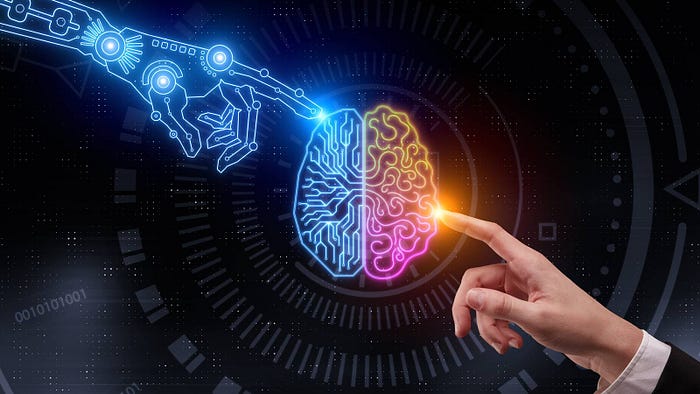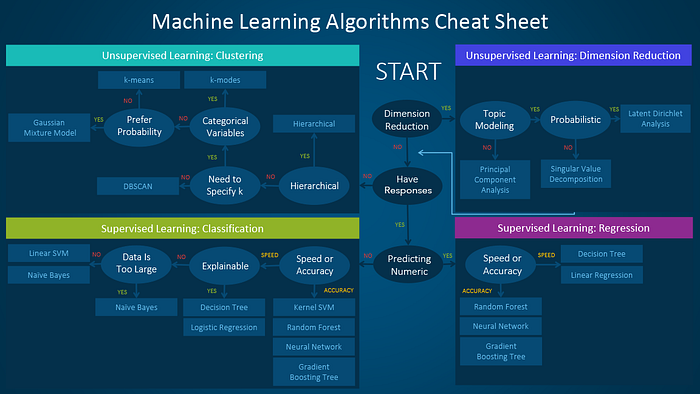What really is machine learning?

Imagine a computer or machine being able to recognize the difference between a dog and a table with very low margin of error. That can be a good way to start understanding the concept of machine learning. However, machine learning is only a branch or subtopic of a much bigger topic that you may have heard before. If you have heard of Artificial Intelligence before then you are on the right track of knowing or at least having an idea of what I’m talking about. In this blog I will be discussing the following:
- Definitions and concepts that you must know.
- What is machine learning used for?
- Types of machine learning algorithms.
- Difference between machine learning, artificial intelligence, and deep learning.
- Where do I have to start to learn machine learning?
- More examples of daily use of machine learning
Definitions and concepts…
According to SAS or Statistical Analysis System (SAS), Machine learning is a data analysis method of automating analytical model building. Based on the idea that systems can learn from data, pattern identification, and decision making without human help, machine learning can be classified as a branch of artificial intelligence. This means that models or systems are able to adapt to any type of data input and learn to store that data for later tasks. Also, although machine learning may seem like a fairly new topic, It has been around for quite a while now. The only difference is that now, mathematical computations and automation are performed much faster. Later I will further discuss some very important concepts of machine learning such as: supervised and unsupervised machine learning as well as the types of algorithms that fall under each category (classification, regression, forecasting, clustering and dimension reduction), decision tree, and deep learning.
What is machine learning used for?
Machine learning is used for numerous things that we may not know about but interact with in our daily lives. In short machine learning is the new era of technology and it helps to make our lives much easier as well as the lives of the big companies that are currently taking over the technology world. One of the many uses of machine learning that you may have come “in contact” with is the way recommendation and possible preferences are suggested to you as the user of platforms such as Netflix, Hulu, Amazon, Google. “But how is this even done?”, you may ask… Well, the concept is actually quite simple; the machine collects data based on the things that you have watched lately, the area that you live in, what may be happening around you, things you may have searched for in the platform, how many time you spend on the platform, and a numberless amount of other useful information. The system or machine then uses this data, and this is where the process of learning takes place. It begins to classify items into different categories. Then, using calculations and statistics, it draws a conclusion and performs a task so that the next time you log into the platform, it can suggest material that may be enjoyable to you.
Types of algorithms
Machine learning algorithms can be placed under 2 main categories being supervised and unsupervised learning algorithms.
Supervised learning algorithms
As suggested by its name, supervised learning algorithms are algorithms that have data inputted to it and predictions can be made based on the data being inputted and there is always an expected specific output. Some examples of supervised learning algorithms according to a blog post by SAS (Li) include:
- Classification: This is when a label is given to the input data. For example; two labels given for images, one being “dog” and the other “cat”. The purpose of the algorithm is to sort images according to their content and place them under the right classification. This is called binary classification. If more labels were specified, it would be a multi-class classification.
- Regression: This is when a prediction is a continuous value. Imagine a linear graph, this is what regression looks like in machine learning.
- Forecasting: This is when a prediction is made based on historical data or data that can be. An example of this is weather forecasting; machines are now using previous weather data, to forecast a climatic event.
Unsupervised learning algorithms
As suggested by its name as well, unsupervised learning algorithms have unlabeled data. The purpose of this is to make the machine find patterns by itself, without much assistance. There are a few examples of unsupervised learning algorithms according to the SAS blog post (Li):
- Clustering: This is done by grouping data (cluster) so that it is similar compared to other groups. Analysis is then done to find patterns in each group.
- Dimension Reduction: Reduces the number of variables under consideration in order to find the true, latent relationship of the data.
There is a Machine learning algorithms cheat sheet that can be used to determine which learning algorithm to use for your specific problem. The following cheat sheet is a collection of ideas from several data scientists and analysts so you can believe that it is pretty legit!

In order to understand the cheat sheet, you must follow the path from “Start”. Follow the conditions; if the answer to the subject is Yes, follow the arrow labeled “yes” and the same for “no”. In short, the syntax is “If <path label> then use <algorithm>” (Li). You must ensure that the algorithm for your problem is the right one, else the data output will be inaccurate.
Difference between machine learning, artificial intelligence, and deep learning.
You may be wondering, “What is the difference between machine learning, artificial intelligence, and deep learning? Are they not the same thing?” According to a medium blog (McClelland) they all somewhat differ from each other. For you to really understand the difference between the subjects, I must first explain what each of them really focus on.
Artificial Intelligence
You must know that AI (artificial intelligence) encompasses both machine learning and deep learning. In fact, it can be said that they are important for achieving AI. Nevertheless, to not stray away from the topic too much, artificial intelligence is what is considered to be systems or machines performing tasks based on intelligence similar to that of humans. These tasks include things like planning, language interpretation, object and sound recognition, learning and problem solving. Humans may sometimes fear that Artificial intelligence may take over one day and the human race will be wiped, but this is not possible because although these machines are able to do tasks that humans can do (sometimes better), there are numberless things that humans can do better than these machines.
Machine Learning
Machine learning can be thought of as the bridge to achieving artificial intelligence. Samuel Arthur once defined machine learning as, “The ability to learn without being explicitly programmed”. This is because artificial intelligence can be achieved without machine learning, but it will take way too much time and effort. It would involve very complex algorithms and lines of code. Machine learning reduces this by providing more efficient algorithms. I know at this point you may be wondering, “How does a machine go from doing tasks dictated by algorithms to learning how to do human tasks?”. This is inputting large amounts of data to these algorithms and allowing them to adjust and learn how to do these things. This is often called “training the machine”.
Deep Learning
Deep learning is a concept of machine learning and it is inspired by the brain’s structure and function. Artificial Neural Networks are algorithms used to imitate the brain’s neural interconnection and biological structure. It is “multiple layered” of artificial neurons and each of these artificial layers is given a task to perform such as the edges of a picture or its pixilation.
Where to start?
If you want to learn machine learning, these are a few things that you can do to start according to https://machinelearningmastery.com/start-here/:
- Determination: Believe in yourself and believe that you can learn everything necessary to learn machine learning. Think about the things that may be holding you back and just let go of them. Look for tips from people who have gone through what you desire to go through. Stay focused and never, ever give up.
- Use thinking processes to evaluate and solve problems: A good thinking process could be the five steps of systematic processes. Step 1, define your problem; what is it that you are trying to solve, what is the main problem? Step 2 prepare your data; Sort or organize your useful resources and data in order to make it much easier when using it. Step 3, Spot check algorithm; use a lot of testing with different cases for your algorithms in order to spot any possible errors and making sure that you fix those problems in the long run. Step 4 improve your results; after successfully testing your algorithms and ensuring that you have covered every possible error, find ways to improve it in a way that makes your project just perfect for what it is needed. Lastly, step 5, present results; showcase your results and possibly get feedback from others on their opinion and how you can improve your problem solving.
- Use the tool that is right for you: Use available learning environments/ platforms based on your level of experience. There is “Weka workbench” for beginners, “Python ecosystem” for intermediate and “R platform” for advanced. You should also know that python is one of the most necessary languages for machine learning.
- Practice on various datasets: choose various datasets to use and practice during your learning process.
- Build a prototype: One of the most important pieces of advice for learning machine learning is to build your own prototype. Apply the knowledge that you have been using for your project to build a small prototype.
References
Li, Hui. “Which machine learning algorithm should I use?” SAS Blogs (2017).
Ltd., Machine Learning Mastery Pty. Need Help Getting Started with Applied Machine Learning? Vermont Victoria, 2020.
McClelland, Calum. “The Difference Between Artificial Intelligence, Machine Learning, and Deep Learning.” (2017).
SAS. Machine Learning. What it is and why learn it. n.d. <https://www.sas.com/en_us/insights/analytics/machine-learning.html#:~:text=Machine%20learning%20is%20a%20method,decisions%20with%20minimal%20human%20intervention.>.
Author
Andrew Kalil
My Twitter
